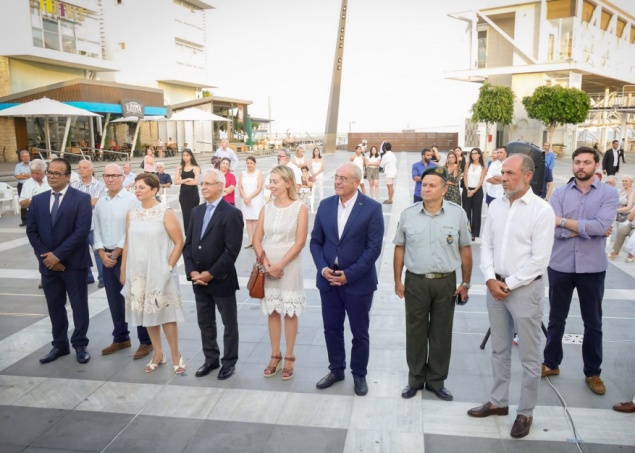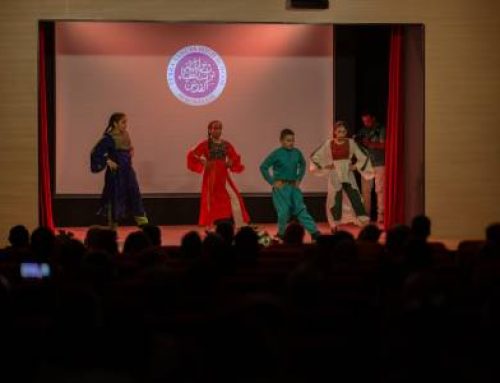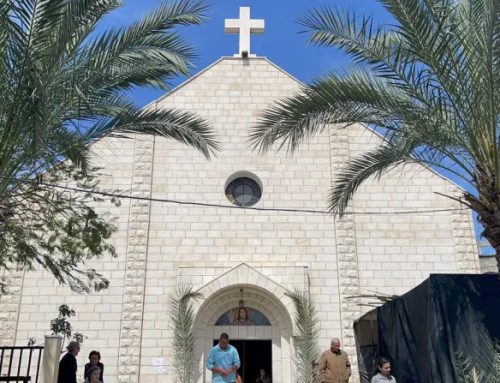LIMASSOL – On July 29, 2020, the inauguration of the exhibition “The Latins of Cyprus” took place now open in the renovated buildings of the warehouse of the Port Authority of Cyprus, located on the square of the old port of Limassol. Dimitris Syllouris, the Cypriot Parliament President, opened the exhibition. Andrea Cavallari, the Italian Ambassador, and Antonella Mantovani, the Latin Community representative in the House of Representatives, were also present. At this time, the Latin Patriarchate Media Office wishes to review the history of the community that has contributed significantly to building the heritage of the Island and to the development of contemporary Cypriot society.
The “Latins of Cyprus” exhibition is now open in the renovated warehouse buildings (Hall M) of the Cyprus Port Authority, located in the Old Port Square of Limassol, where the public can visit it until October 19, 2020.
The exhibition contains historical and photographic material and objects related to the centuries-long presence of Latins in Cyprus. All information is available in Greek, English, and Italian.
Dimitris Syllouris, President of the Cypriot Parliament, opened the exhibition alongside the representative of the Latin Community in the House of Representatives (National Assembly), Antonella Mantovani. The Ambassador of Italy to the Republic of Cyprus was also present.
The exhibition is open to the public from July 29 to September 20 between 5:00 p.m. – 8:00 p.m. and from September 21 to October 19 between 9:00 a.m. – 1:00 p.m. and 5:00 p.m. – 8:00 p.m.
The Latins of Cyprus – History, and societies
Almost a thousand years old, the presence of Latin Catholics in Cyprus has remained interrupted since 1192. Although the demographic weight and the legal status of this community evolved continuously with different occupying powers, until the independence of the Island and its official recognition as a religious group, its contribution to the economic, cultural, and social development of the Island is a constant. Today’s Latin Cypriots form a respected community, recognized by the State, and whose membership of the national population in a Greek majority society is illustrated, among other things, by the extent of the heritage, both tangible and intangible, bequeathed to the Cypriot people.
Latins’ first contacts with Cyprus dates back to 1126 through traders from Venice and Genoa. The history, however, of the Latin community of Cyprus began in 1192 with Catholic migrants – Romans, Cilicians, and Levantines – welcomed by the Frankish king of Jerusalem. In 1196, a Latin Archbishop took office in Nicosia, the current Cypriot capital, accompanied by three bishops who settled in Famagusta, Limassol, and Paphos – resulting in the arrival of many Roman Catholic orders, which settled on the Island during the Frankish and Venetian periods (1192-1489 and 1489-1570). During this interval, the Latins of Cyprus represented 15-20% of the population and exercised significant influence as the ruling nobility.
The Ottoman conquest of the Island (1570-1571) ended this golden age, causing the exile of thousands of Latin faithful and the official dissolution of their Church by the Porte. The clergy – Franciscans and others – somehow managed to maintain a presence on the Island. The role of the consulates in Larnaca, from the 17th century onwards, provided support to the many European migrants who were bankers, doctors, property dealers, and traders. Their presence contributed to the development of a small Latin community in that city. Schools were set up by religious communities, the Terra Santa school established in 1646 by the Franciscans, and the Saint Joseph school founded by the Sisters of the same name in 1844.
The policy of religious tolerance, which characterized the British period from 1878, strengthened the Latin community, whose schools were multiplying in the various towns of Cyprus, allowing the Latins to integrate into Cypriot society as a whole.
When Cyprus gained independence (1960), the Latin Catholic community enjoyed a further step of freedom when the State recognized it as a religious group. Then it won an elected representative in Parliament.1
Despite the Turkish invasion of 1974, which turned many Catholic families into refugees, the Latin Catholic community in Cyprus continued to grow, prosper and strengthen its contribution to the development of the Island in all its aspects, especially in matters of education. Latin schools with high standards educate thousands of students of varied religious and ethnic backgrounds. Only two Latin establishments operate on Cypriot territory today: Terra Santa College in Nicosia and Sainte-Marie School in Limassol.
On the other hand, the Latin Cypriots are proud of their outstanding architectural and linguistic heritage, done primarily during the Frankish and Venetian periods. They built many monuments (forts, castles, abbeys, cathedrals, chapels), and added words – still in use today – to the Cypriot dialect.
Since 1847, a Latin Patriarchal Vicar2 has been present in Cyprus, under the authority of the Latin Patriarchate of Jerusalem, which has four parishes on the Island. The Patriarchate manages the Church of Saint Paul of Paphos, and the Franciscans the other three. Residing in Nicosia, eleven priests, officiating in the capital, Limassol, Larnaca, and Paphos, support the Vicar. These towns which are home to a dozen Latin churches and chapels distributed equitably between the four localities.
The Latin community is also very active at the associative level. Many social, humanitarian, and charitable organizations (refuges for foreign workers, retirement homes) exist on the Island today, and monthly and bi-monthly bulletins are published by the parishes and Ms. Antonella Mantovani, their Representative in Parliament.
_______________________________________
1 The current Representative of the “Latin Religious Group” in Parliament is Ms. Antonella Mantovani
2 The current Latin Patriarchal Vicar is Fr. Jerzy Kraj, OFM
By: Geoffroy Poirier-Coutansais
Source: Latin Patriarchate of Jerusalem






